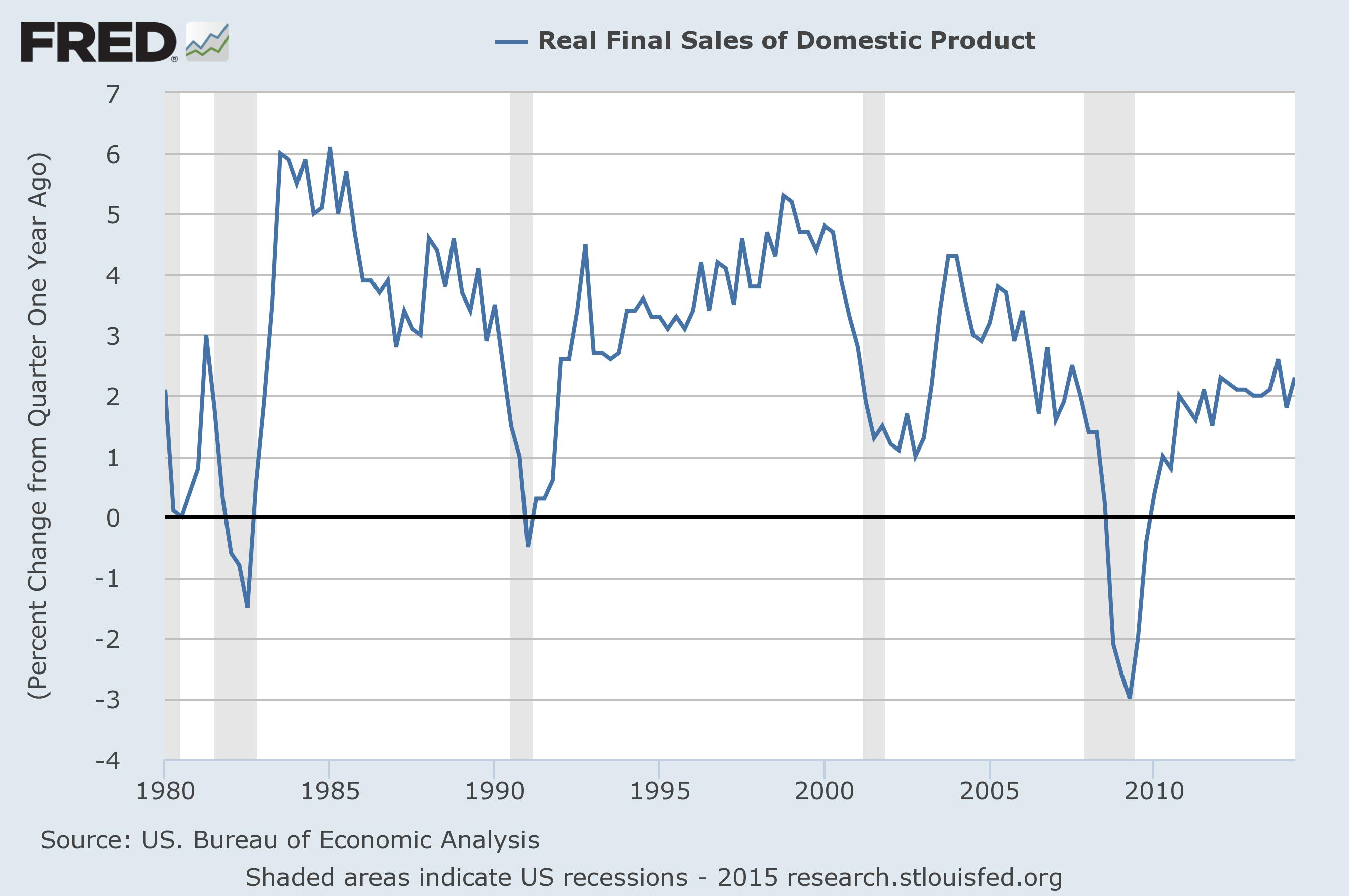Five years after the worst financial crisis since the Great Depression, economists are still starkly divided as to its causes. Perhaps this is not too surprising as we are now more than 80 years past the Great Depression with little end in sight to the debate surrounding the causes of that downturn.
Most economists fall into one of two camps when explaining where the imbalances originated that led up to the current crisis. Austrian School economists are in the unique position of being able to reconcile these two camps, even while favoring the first explanation to the second.
The first camp, which includes most Austrian School economists, looks at the imbalances caused by central bank interest rate policy being set “too low for too long.” In this view, artificially low interest rates allowed for erroneous capital investments following the dot-com bust of 2001, and continuing to the present time.
The Federal Reserve’s artificial reduction of interest rates (to use the U.S. as a proxy for the Western world) put in motion two shifts in the economy. The first was the decrease in savings by Americans, and a corresponding consumption-led boom (what Mises called “overconsumption”). The second was the overall decrease in investment and production in the lower stages of the capital structure, with a corresponding increase in investment and production in the higher stages. This shift is what Mises termed “malinvestment.” Note that this shift does not represent an “overinvestment” in capital, as is commonly and erroneously claimed by non-Austrian economists, but rather a temporal shifting of productive activity from stages closer to consumption to those further away.
Specifically, we see malinvestment in the large-scale shift of capital away from manufacturing in favor of higher-order research and development. Overconsumption, on the other hand, is illustrated by the rise of consumer culture embodied by big box stores and a plethora of shopping malls and outlet stores.
In the opposite camp are the economists favoring the “excess savings view” or the “global savings glut hypothesis.” These economists view the crisis as a result of current account surpluses, primarily in Asian countries, that led to financial imbalances in Western economies.
As consumers consumed more but the economy restructured itself away from producing consumer goods, an increase in imports was inevitable. As luck would have it, developing countries — and especially Asian countries — were in the reverse position of the U.S., and years of financial underdevelopment left many of them with immature financial markets. These Asian countries also proved to be low-cost producers of many products. As Americans increased their imports from these countries to feed their own unsustainable consumption-led boom, the net proceeds in these countries had no developed domestic financial markets to invest in.
In response, these funds were channeled back to U.S. financial markets, and in the views of those who favor the saving glut theory, it was this that set in motion the unsustainable boom. As time went on, the trade surpluses in Asia resulted in net capital outflows in search of a market to invest in. Western economies that were the recipients of these capital flows witnessed remarkably low interest rates and credit booms with a corresponding buildup of debt.
Thus, in the view of proponents of the savings glut theory, the Federal Reserve was not the cause of lower interest rates, but rather it was a passive observer as interest rates were lowered exogenously from these foreign sources.
Yet proponents of the global savings glut hypothesis must grapple with one unanswered question: what caused citizens of Asian countries to increase their savings rate and destabilize Western economies with their excess capital outflows? One could take the view that savings rates are exogenously determined — e.g., by animal spirits — yet this “explanation” only pushes the problem one step back. What determines these animal spirits?
To find a satisfying answer we must look at the role of monetary policy in determining saving rates.
There is no need to look to animal spirits or any ill-defined exogenous force to explain why developing countries increased their savings so much during the boom and funneled these savings into Western financial markets. The unsustainable boom propagated by Western central banks set this process in motion by creating a disconnect between the consumption demands with the domestic productive capacity of their economies.
Moreover, the current ire directed at the loss of manufacturing in the United States is not the result of “greedy outsourcers” or even “currency manipulators” in Asian countries. The loss of productive capacity in the U.S. is the outcome of a too-low interest rate policy by the Federal Reserve incentivizing entrepreneurs to move their investments to the higher stages of production — those furthest from final consumption — while simultaneously incentivizing consumers to increase their present consumption at the expense of savings.
This article was previously published at Mises.org.




“now more than 80 years past the Great Depression with little end in sight to the debate surrounding the causes of that downturn” – Pure genius!
Specifically, we see malinvestment in the large-scale shift of capital away from manufacturing in favor of higher-order research and development. Overconsumption, on the other hand, is illustrated by the rise of consumer culture embodied by big box stores and a plethora of shopping malls and outlet stores.
————————————-
So instead of foundries, smelters, tanneries and mills we see what?, GMO study fields and economics think tanks? Really? And overconsumption is illustrated by a change in distribution and marketing in the retail sector that makes towels and tomatoes cheaper for the consumer? How does inexpensive laundry soap in large containers illustrate overconsumption?
If there’s anything that dramatizes the current economic situation it’s the level of average consumer credit card debt, a circumstance that has led to ordinary schlemiels making monthly payments they can’t afford on HD televisions, unattractive clothing and over-priced restaurant meals, along with auto expenses and astronomical mortgages. Nobody held a gun at the head of these shoppers, they represent collective insanity, another good argument against democracy.
Hi Chuck:
saying that hundreds of millions of consumers were all inflicted with “collective insanity” around the same time, and that they demonstrated it in the same way seems a little farfetched, no? Perhaps looking for a common cause, like historically low interest rates, is a good place to start looking for an explanation?
The tulip mania of 17th century Holland, the ostrich plume bubble of pre-WWI South Africa and the late US residential housing bust are examples of collectivist economic misconceptions. If an individual is willing to squander his life savings on a tulip bulb it’s regarded as a major eccentricity, perhaps insanity. If large groups of people do so it’s a “financial strategy” or a trend. Do you happen to own a time share in Cabo San Lucas?
Perhaps all marketing is intended to increase “consumerism”, whatever that is, since everyone is a consumer by necessity. In the 19th century no doubt many conversations around the cracker barrel in front of the pot-belly stove at the general store in Podunk Junction revolved around the new Montgomery Ward and Sears operations, whose incredible choices and delivery to the consumer’s door by paid government agents would soon run that general store out of business. A century later both mail-order firms are either gone or going and the big box behemoths cater to a clientele that’s interested in low prices based on an economy of scale. Is the federal reserve bank’s interest rate price fixing really the raison d’etre for Walmart? And isn’t the interest rate on unpaid credit card balances substantially higher than the federal funds rate?
I’ll go further. Today, as it does every Saturday, the Wall Street Journal “Off Duty” section spotlights various articles of clothing. Today they included:
Roberto Cavalli pumps……………..$1,115
jcrew baseball cap………………….$298
charlotteolympia clutch……………..$925
Schnayderman’s shirt………………..$280
These items, and many others, are representative of consumerism, whatever that is, on performance enhancing drugs. They can’t be purchased in big box stores, the actual antithesis of consumerism, where low-income shoppers can purchase affordable necessities without frills.
Dutch Tulip Mania was brought about as local authority offered to melt down visiting merchants gold coins into the local currency and return the same weigh back for free. This meant visiting merchants had to spend the glut of low interest gold money on something. All merchants love to build a product up beyond its face value and tulips was as good a place as any as we have seen.
I do think your soap analogy was a poor one for the reasons given in Craig Howard’s reply below and smacks of a Krugmanesque style response where ‘iPad 4 is down in price therefore overall inflation is down’. He loved to make up a false parody of someone else’s views, rip apart the false analogy they had no part in, then duly ridicule them and declare victory. If you have to win that way then you know we are correct.
How does inexpensive laundry soap in large containers illustrate overconsumption?
It doesn’t, but, then, you’re the one who made it up. The author’s example was “big box stores and a plethora of shopping malls and outlet stores” which is a very good illustration, indeed.
It should be stressed that the commercial banks (as with the 1920s with the terrible policies of Benjamin Strong of the New York Federal Reserve) were encouraged every-step-of-the-way by the Central Bankers (such as Alan Greenspan – with his endless mini, and not so mini, bailouts).
The bankers may have been greedy fools (they may still be greedy fools) who lend out “money” that does really exist (credit expansion – i.e. the creation of a credit BUBBLE). But their incentives were twisted (still are being twisted) by official policy (by the Federal Reserve, Bank of England, Fannie Mae and on and on).
All possible checks on the behaviour of the bankers were undermined (“do not worry, we have your back, just DO IT”) and every possible encouragement was given to bankers to do the wrong thing (“cheap money” – cult of).
All that being said…..
Once a credit bubble is created it will (sooner or later) bust – and the bank credit will shrink back down towards the monetary base (the actual money).
Should the authorities try and prevent the “deflation”?
Remember it is not real money that is being “destroyed” – it is a credit expansion (not money – but a credit bubble that was treated as money).
Oddly enough, as a boy (yes I was weird enough to think about such matters a child – back in the ancient times fighting the sabra toothed tigers on the way to my cave) I thought the answer was “yes”.
I believed that the government should print (physically print) fiat money and hand it out to the bankers (give – not “lend”) to cover their credit expansion.
However, it was to be a one time deal – the bankers would not (in future) lend out money that did not exist, physically exist.
I know longer believe this – and not just for reasons of economic theory.
No such deal could really hold – bankers (and their defenders) are expert word spinners. In their webs of words they can make it seem that they are just lending out real savings – when they really doing something different (wildly different) from that.
The only thing that will really restrain bankers is not some legal deal – it is the risk of BANKRUPTCY.
No Central Banks no bailouts.
If your credit bubble is so big it is going to bankrupt you – then you go bankrupt.
Good point Mr Osborne.
In contrast the private mints of the American West (abolished, in a act of political power, by the American Congress in the 1850s) charged a fee (a small fraction of the gold or silver) to turn raw gold or silver into coins.